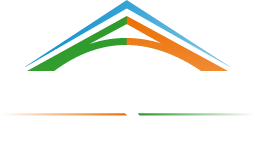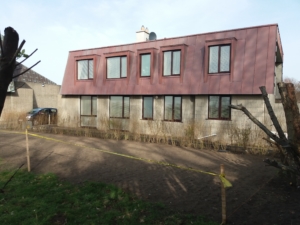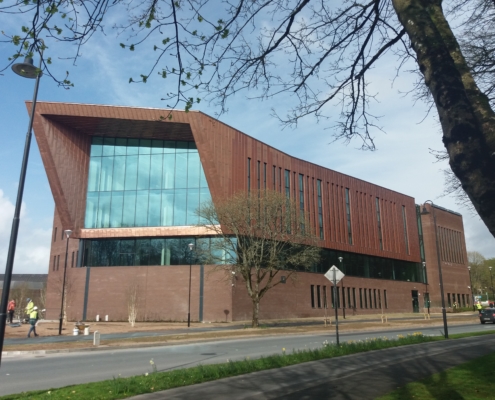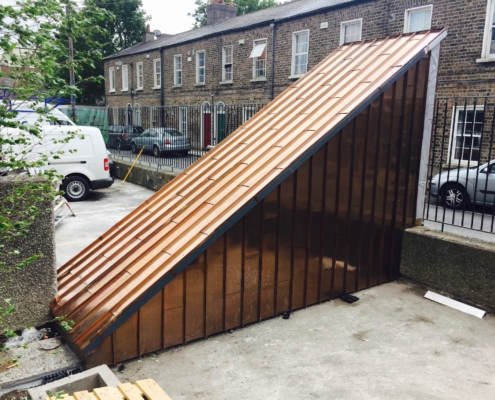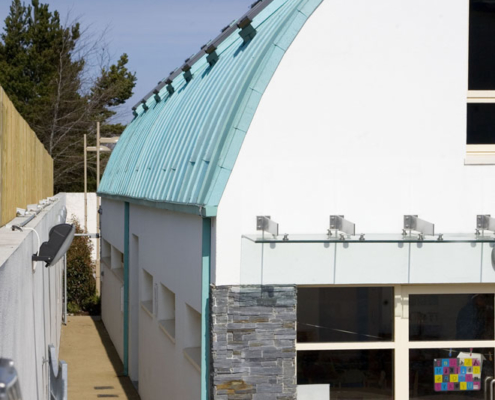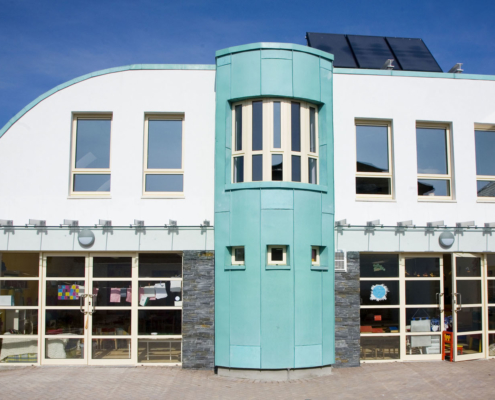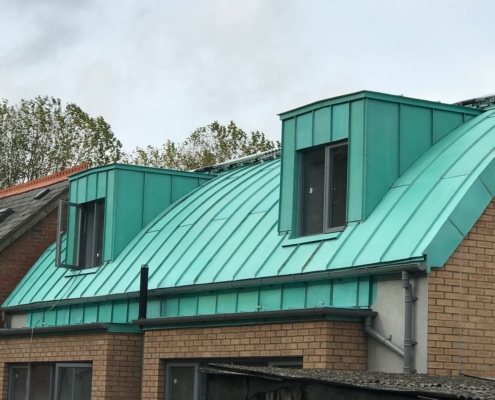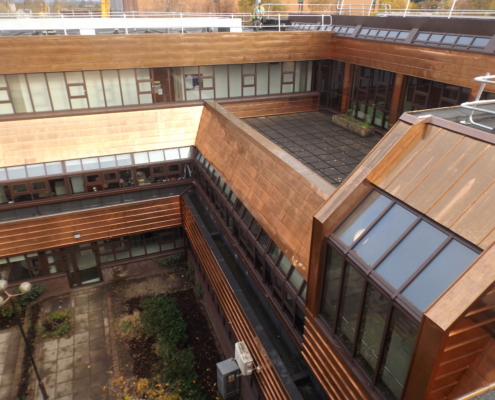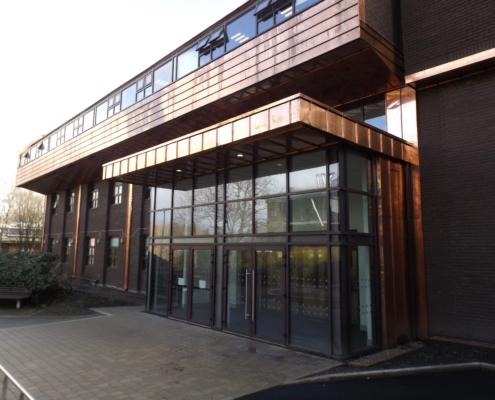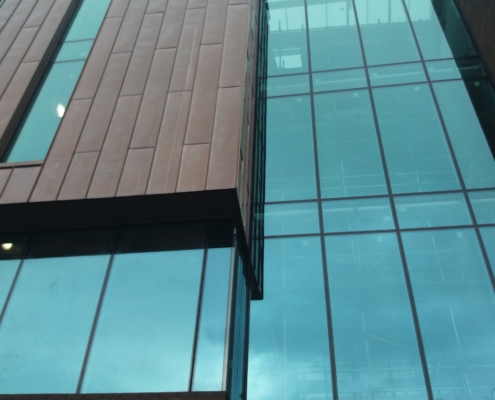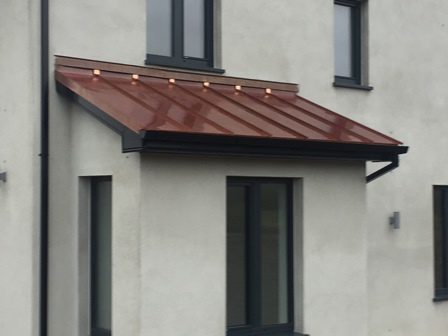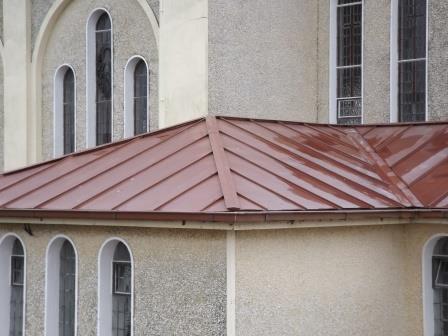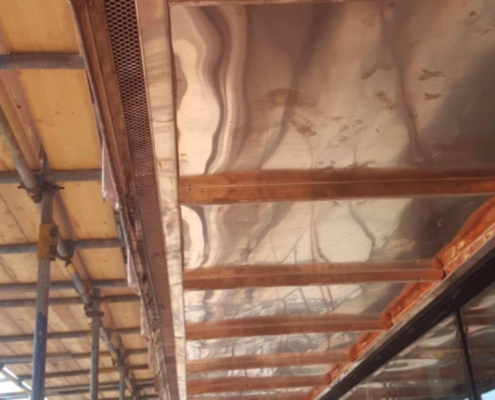Copper has been used as a waterproof roofing material since ancient times and can be recognised by the greenish roofs and domes on today’s buildings. This colouring is the reaction of air with copper which creates an additional protection against corrosion. Firstly copper oxide forms, followed by cuprous and cupric sulphide then subsequently the green layer of copper carbonate, called verdigris or patina.
Today, tried and tested fixing details and techniques make copper the ideal trouble-free building material for roofing, cladding, flashings, gutters, downpipes and other architectural details. Advances in prefabrication techniques and machinery and fixing technology have greatly reduced costs, which enables copper to be used in a greater variety of building situations than in the past.
Copper is rolled to thicknesses ranging from 0.5 to 1.0mm, but 0.6 to 0.7mm thickness is usually used for roofing. It can be worked at any temperature and does not become brittle in cold weather. It is available in sheets or strips and is generally regarded as a lightweight covering requiring a substrate such as boarding.
Careful consideration is paid to the design of each copper roof, particularly where complex three-dimensional corners found at chimneys, gullies and valleys, must maintain junction integrity. The complex junction pieces must be carefully patterned and folded tight to ensure a complete seal.
